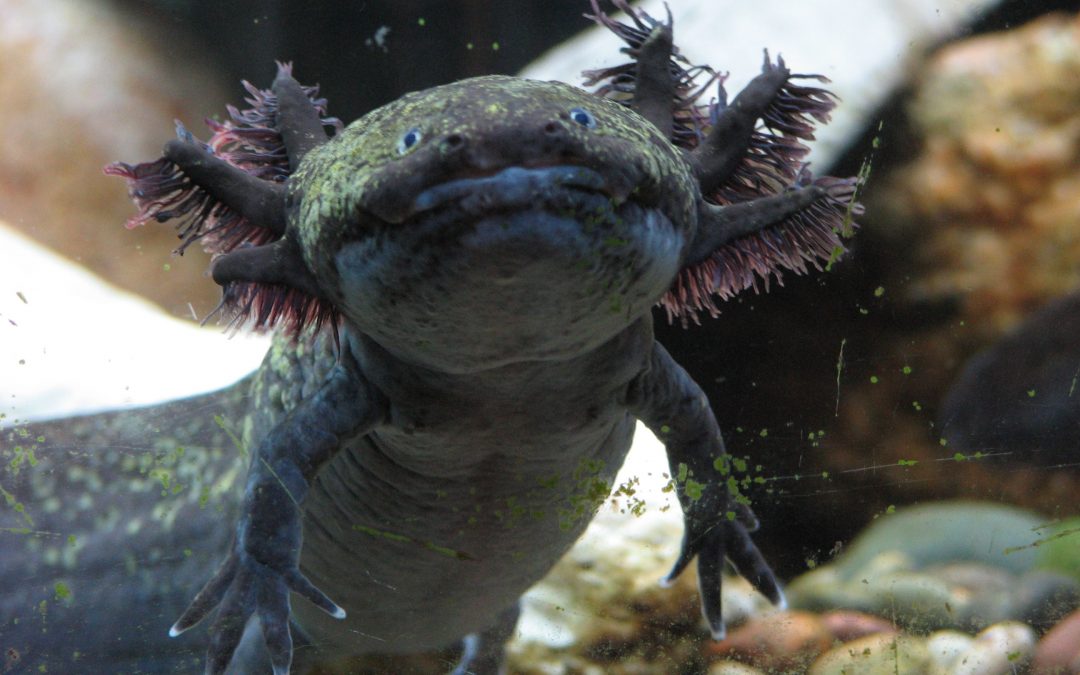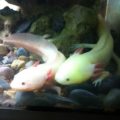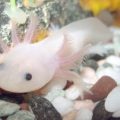Table of Contents
We must know about biology and genetics before we fully know the facts of the axolotls’ life cycle. Our species would remain in the larval form into adulthood compared to other amphibians, we often call this adaptation as neoteny. In the next axolotls’ life cycle, it reaches sexual maturity. The species is known to have a carnivorous nature. In the axolotls’ life cycle, the small teeth can grip the food after which, it can be swallowed whole. Other than that, they have rudimentary lungs in which they need to occasionally rise from the water so that they can breathe. These lungs are a great part of the life cycle of the axolotl. It will develop after the legs have reached the full length.
Axolotl Life Cycle and Sexual Maturity
It is known that the life cycle stage, axolotl starts at being eggs. Layers of jelly and embryo are the main components of the eggs. The layers of jelly have a lot of water and substance that is secreted when the legs are laid. When the pet reaches around 11 millimeters will hatch and it will become a limbless, young larva. The larval stage of the axolotl will be transparent in their first few weeks. The digestive progress and organs are quite visible especially when their skin thickens. Two weeks after, the front legs will be developed. After which the hind legs will follow. At this point, the animal will look like a miniature adult version. The adult will reach their potential size around 18 months up to two years, it well depends on the aquatic condition as well as feeding.
Males vs. Female Axolotls
Male and female axolotls are easily distinguishable. You just need to look at two key characteristics. Females have thinner cloacal region and have more rounded bodies, the reason for these features is that this is the space where they store their egg for fertilization. The male has a swollen cloacal which is located in their lower abdominal region. Aside from these, the male has longer tails and quite elongated. These are the things that you need to look out for in the axolotl life cycle.
There is quite a discrepancy between different axolotl. Dark brown toe-tips with darkened soles axolotl have gone less in the life cycle, compared to the white, golden, and albino axolotl. This gravely affects their sexual maturity. Melanoid and wild-types also exhibit discoloration due to their toe-tips and this tends to be light instead of dark.
We also need to note that males would not have readily available sperm for mating. It would usually take a male around 2-3 months to produce its sperm and another two months for the correct position for ejaculation. If you want to become an axolotl breeder, make sure that you know and properly plan the breeding season, and also know its life cycle.
Axolotl Life Cycle and Genetics
Axolotl has only 28 chromosomes compared to the humans which have 46 chromosomes. These things are long coils of DNA which tell us how cells properly function. Without DNA, no organism could properly survive. This is why the chromosomes are important.
The reproductive process is a great part of the life cycle of axolotl. Female egg cells combine with the male sperm cells, each cell contains 14 chromosomes. The combination of these cells creates another entity which we call a zygote. This zygote has 28 chromosomes. The zygote will not contain genetic data belong to the mother and the father. This is one great reason why the offspring will get the characters from both parents. This also goes the same for us, humans.
The gametes, the female and male sex cells, have different genes which we call the alleles. These alleles can be compared to codes. These codes are the one in charge of different characteristics such as skin pigmentation and eye color.
The two common groups of alleles are recessive or dominant. The combination of these things would determine how an axolotl would look like. For example, if an axolotl would have a DNA containing the alleles of A and a. The A allele is dominant – for this example, we will take the wild-type morphism and the a recessive allele is causing albinism. If the alleles containing A and A were to be combined, it would produce a wild-type axolotl. While an A/a will form this, the a/a combination would result in albinism due to no other combination. The a allele is both the dominant and recessive, so it overrides itself.
The alleles present on both female and male could well determine the combination of the axolotl’s life cycle. The male carrying a certain allele would be mated to another female carrying a certain allele. This would result in an albino offspring. The breeders can already guess the characteristics of the future axolotl’s babies before it is even bred.
Axolotl Life Cycle: Breeding Methods
It is not a secret that these salamanders are very easy to breed. However, there are still measures that you need to do and steps to take in order to mate the species properly, just like any other animal.
The sexual maturity of the axolotls is between five months and up to a few years. This is a great part of the life cycle of axolotls. However, if you plan to breed these animals, do not breed them if they are under the age of 18 months. You should give enough time for your axolotl to reach its full size. If you own a female axolotl, it could produce more than 1,000 eggs. For females, its body prioritizes the egg production rather than any other process such as its growth.
In an axolotl’s life cycle, you could seriously damage the body if you plan to reproduce it while it still hasn’t developed. Going back, remember that the breeding should be done after the axolotl is already 18 months because it can really affect its life. However, you can breed your pet at any time of the year, however, some breeders might suggest breeding it from December up to June.
How to Set – Up Your Axolotl’s Breeding Tank
Placing plants inside your tank is a good idea. Live plants are encouraged because this will serve as a laying place for their eggs. You should also place slates or rough pieces of stone along the bottom of the tank, it will give your male axolotl a place to put their spermatophores or their sperm cells.
For mating and the courting process, it is usually the male who initiate the spawning. In the life cycle of your axolotl, your male axolotl will deposit around 5 to twenty five sperm cells on stone tops and also on other parts of the aquarium. In a typical breeding season, male specie would raise their tail and do a writhing motion to the female. The female will, then, follow him. This now will be led to an action around the tank. The male will lead the female in the area in which he deposited his spermatophores.
This is a typical axolotl’s life cycle.
During the hatching period, if you see an albino morph egg, it will appear like bright white after a few hours. Normally, eggs are usually dark brown in color. In the axolotl’s life cycle, the eggs will hatch and become larvae. This happens around two to three weeks. As a responsible breeder, you need to keep the eggs in a well-ventilated place. You can purchase an air pump to make sure that the air is well-maintained. You can expect your egg to hatch around 14 to 17 days or around after 2 1/2 weeks.






 Author and long-time animal lover. Sharing knowledge on pet care through experience and the written word.
Author and long-time animal lover. Sharing knowledge on pet care through experience and the written word.